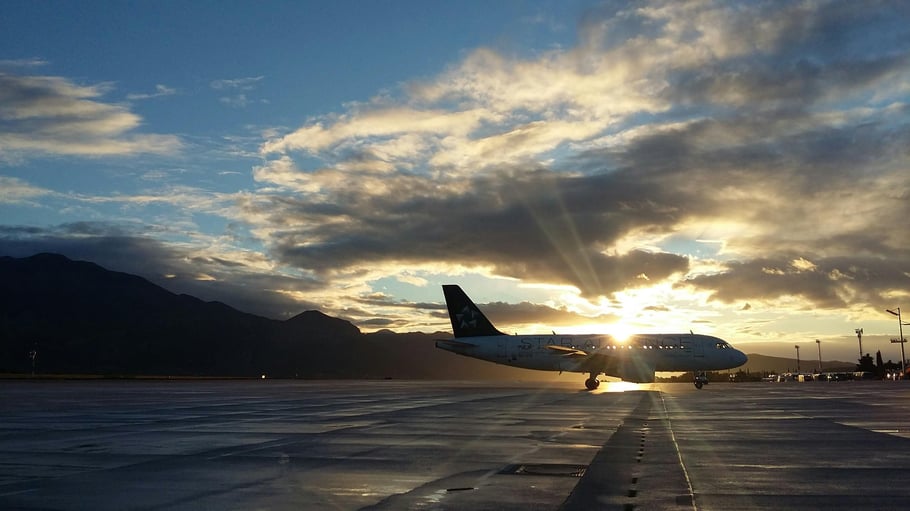Q&A: The future of airline payments
A conversation with Kelvin Li, Head of Platform Tech, Ant International
What could the future of airline payments look like with AI and fintech innovations, including blockchain and tokenisation tech, as key driving forces? Kelvin Li, Head of Platform Tech, Ant International shares on IATA's (International Air Transport Association) Talk Box interview how innovation will shape travel experiences and payments.
Antom's unified platform for cross-border mobile payment and digitisation technology is powered by Ant International's Platform Tech. Antom is the preferred payment partner of choice for leading airlines worldwide including Air Asia, Malaysia Airlines, United Airlines and VietJet Air.
Kelvin Li, Head of Platform Tech, Ant International shares on the future of airline payments in an IATA interview
Transcript:
When it comes to the future of money, what innovations are reshaping retail environments?
As I actually addressed in the keynote in the morning on the future of money, we think there are two technologies, specifically, that will be the driver of the future of payments and the future of finance. They are blockchain and tokenisation technology. And the second is artificial intelligence and privacy-preserving computing.
These two sets of technologies will drive the payment infrastructures. And secondly, also using AI, driving the whole spectrum of financial services, including treasury services and also core financial services like pricing, payment routing and also trading of foreign exchange.
How can AI can be leveraged to manage money and impact business?
Well, AI has been talked (about) a lot, Large Language Model, AI Agents, especially recently. I think it (the hype) is real. Firstly, it will be able to help us to make treasury operation, treasury strategy much more dynamic than now. For example, we recently tried, in foreign exchange management, which is a headache for many treasurers because on one side, it needs to manage the business, which you need to know how much positions you have around the globe across all subsidiaries. On the other hand, you need to understand the financial market because it is volatile all the time. And you need a very dedicated special team to combine these two to form your foreign exchange management strategy.
Well, this exercise can be done much more efficiently via AI. They can forecast your exposure on one side and on the other side, they can understand the market situation to form an FX hedging strategy, which can greatly reduce the hidden cost in cross-border payment in treasury management and lower your cost and improve the customer experience in cross-border payment and cross-border e-commerce.
How do you see payment solutions enhancing airline experiences especially for international travellers?
I think payment has been a very important component in the airline industry, in the travel industry. On one side, it directly impacts the customer experience in terms of how they pay, in terms of the cost they pay.
On the other side, for the airlines, payment can be a cost, but it can also be a revenue source. So now, a lot of payments have been considered as a cost, right? When people talk about payments, we focus on one pricing line and want to reduce it. But actually, payment, especially working with your payment partner, it can actually allow you to reach more customer bases.
Joint marketing programme to actually get more flows into the airline and apps or portals. And then going together, this can drive the revenue of the airline companies. So, we believe that payment can be a major driver and a good partner of airlines to drive the business forward.
How can Antom's expertise in Asian and global payments help airlines tackle cross-border challenges?
Wow, this is a big question. So, we all know that Alipay+, Ant Group and Antom – we are all actually born from the Alipay e-wallet. So, we actually specialise by starting with alternative payment methods like e-wallets, and other mobile payment methods.
In fact, we're the largest provider of alternative payment methods around the globe. We hope to keep expanding. Now, our core offering includes card and other payments to provide a total (payment) solution to our customers. On top of payment methods, we also want to give our merchants (and consumers) a better experience.
For example, we are actually using our AI capabilities to create more risk management, fraud detection and other products to allow payments to be safer. At the same time, we use our treasury capabilities to allow payments to happen in real-time, we call it RTP (Real-Time Payment), to enable settlements to be faster, FX to happen and more preferential arrangements for customers and also for the airlines.
Last but not least, through our Alipay+ Rewards Programme and other programmes, we hope to bring the customer element in. We can have joint marketing (with customer benefits) to allow airlines and travel operators to attract more flows and actually giving the right incentives to the right customers to actually generate more revenue. So, we're not only doing payments, we're payment plus!
What payment innovations will most impact the airline industry in the coming years and how is Antom leading these developments?
I think we're still going back to basics, we want to make payments safer, faster and make payment cheaper. Of course, (create an) overall better experience!
As I said, to make payments safer, we use AI technology to do fraud detection, to actually do risk management behind it so that we will allow cross-border acquiring, allow cross-border payments to be safer. And of course, to make it faster, we use our treasury engine, Real-Time Payment (RTP) System, blockchain-based strategy management to allow our settlements to merchants to be happen faster, or happen within 24/7, even on a calendar-day basis. To make it cheaper, we introduced more new payment methods from cards to e-wallets, account to account to open banking – to allow those payment methods to come in – so, with a combination of different payment methods, it can collectively reduce the cost to the merchants and also from the customer's perspective.
Last but not least, payment plus, right?
As I said, we actually bring the marketing factor into it. We bring more flows, more customers, more use cases so that the airlines can use us as a tool to get business growth, for customer acquisition, to drive more dynamic customer behaviour via payments. So, to do that, we think we can jointly contribute to the cross-border payments and make it better for the airlines.
As a B2B payments leader, what best practice or insight can you share with global travel businesses?
B2B payment is a space that I think will have a lot big of room to improve. For example, recently, we are looking at the link between airlines and (online travel) agents (OTA), who actually purchase and source tickets from the airlines. How to make the money movement between them faster and secure and more convenient? Because a lot of transactions are happening, and the speed of money movement may not come at the speed that an agent wants. For example, I have a big tourist group. I want to top up my pre (provisional) funds in with a low-cost airline via the where, (via) the banking system, the money may only arrive one day or even two days after. Allowing them to actually make account-to-account (A2A) payments, which could happen almost instantly.
Such examples are still happening. So, we are developing more and more such products to allow this to happen actually with the innovations. So, as I mentioned, in B2B, we want to bring in airlines as our partners rather than (us) becoming a vendor so that we can jointly co-create new products to allow B2B payments to be improved.
For B2C, I think over the last 20 years, we have done a lot. We hope that we can also bring some innovation to B2B to make it better.
Want to learn more about airline payments? Speak with our team today.





